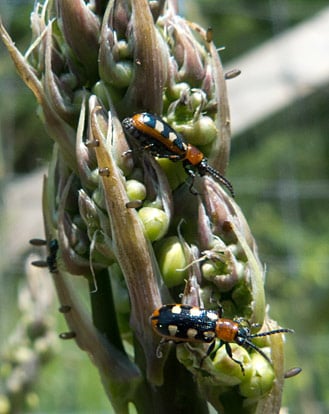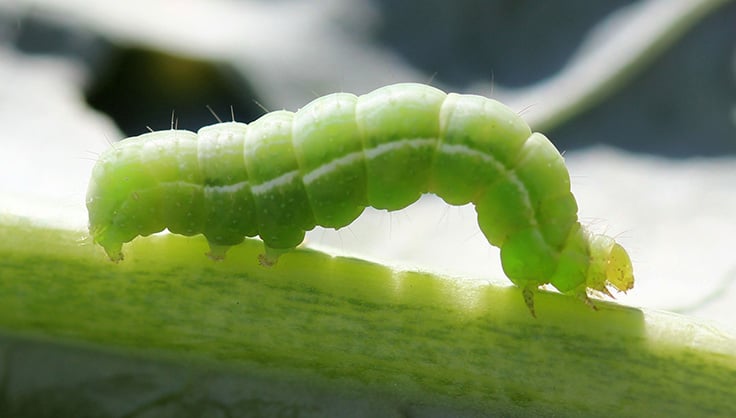Asparagus Beetle
 Asparagus beetle Photo: Ann Whitman
Asparagus beetle Photo: Ann WhitmanThese 1/4″ beetles and their larvae feed on young asparagus spears; damaged spears often develop blemishes and a shepherd?s crook appearance.
One species of asparagus beetle is blue-black; another is orange with black spots. The larvae are small, greenish gray, humpbacked grubs with dark heads. You may spot damaged spears before you see the pests themselves.
Beetles and larvae also feed on asparagus fronds later in the season. Adult beetles emerge in early spring after overwintering on old asparagus fronds or in garden debris. Adults lay shiny black eggs on the spears; the eggs hatch about a week later. There may be two to five generations of this pest each year. Some asparagus beetle damage is usually not a problem, but if you observe adult beetles on 5 to 10 percent of your plants and/or larvae on half of your plants, it?s time to control this pest. Asparagus beetles are common throughout the U.S.
Prevention and Control
- Keep spears harvested to reduce the opportunity for egg-laying.
- Cover your patch with garden fabric until harvest ends.
- Handpick adults or knock them into a container of soapy water.
- In fall, clean up garden debris to minimize overwintering. Once asparagus fronds turn yellow, cut them off at or just above soil level. Destroy the fronds.
Last updated: 03/15/2024
Print this Article:
Related Articles
Get the Dirt
Stay up to date on new articles and advice. Please fill out the information below.



